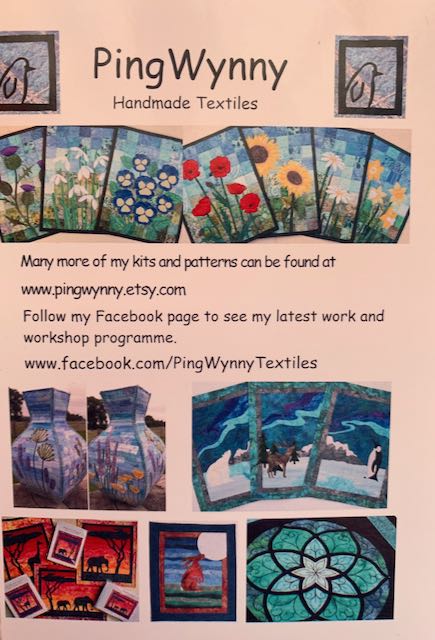
The talk last month at Seata was by Gillian of PingWynny (Handmade Textiles). It was also a “Show and Tell” of a huge range of her beautiful work, quilts, cushions, pictures / panels, 3D vases, mainly in bright, vibrant colours and fabrics, a mix of machine and hand stitching. Gillian also told us about her workshops and classes, one of which is a 15-minute drive away once a month…. and the one on Wednesday evening this week was on fabric painting, something which I love and haven’t done for ages. Too good to miss.
The only thing I needed to take was fabric, either silk or cotton, and frames / hoops. Last minute as always, I was scrabbling about for suitable cotton and my frames. I’d bought a box of slot-together ones from a sales table for 50p, already coloured with paint, so not going to mess up good ones. Perfect.
Gillian was providing the paints, brushes and salt, mainly Setasilk and a few Maribou (which I have previously used on silk). I wasn’t aware that they could be used on cotton. They are all iron fix.
After a quick demonstration and showing us some of her examples, we were ready to start.
Rather than cutting my fabric, I attached my strip to two frames and made a start, with the green and yellow one first, basically in blobs, and adding salt at the end, then the middle one working the colours out from the centre before adding salt. These two were done on damp fabric (just a fine spray of water). Gillian lent me a hoop for the bottom one, which was done with spirals of colour on dry fabric and then wetting the darker areas to encourage the paint to spread. I was so engrossed in what I was doing that I forgot to take photos, so these were taken when the salt was removed once it was all dry.

The wrong (?) side of the fabric gives a more subtle colour.
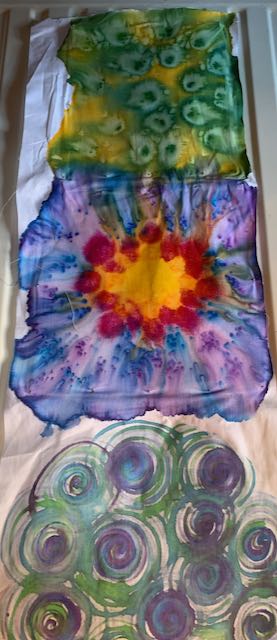
I’m especially pleased with the spirals.
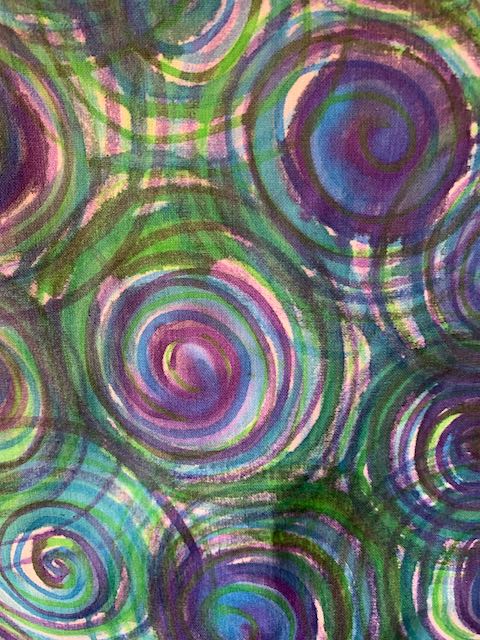
I’d also taken a very large frame with a fine piece of calico stretched over it, which Gillian asked if I was going to use. Yes, using some of the techniques again with a different palette. I blobbed colour and then sprayed with water, which made the paint spread into interesting tendril effects.
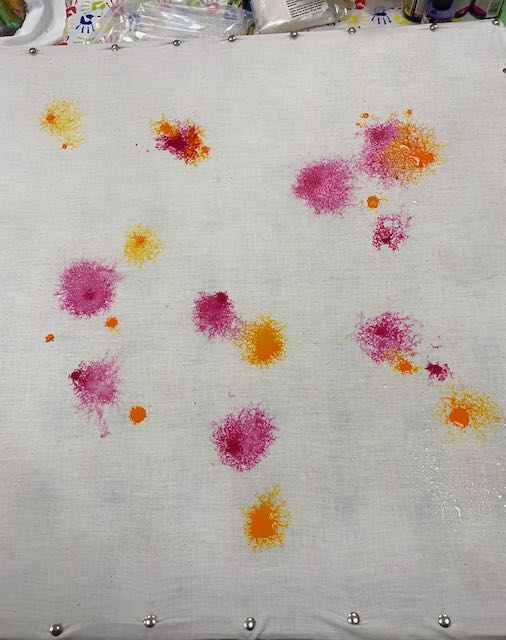
More paint, more water ……

…… more colour……
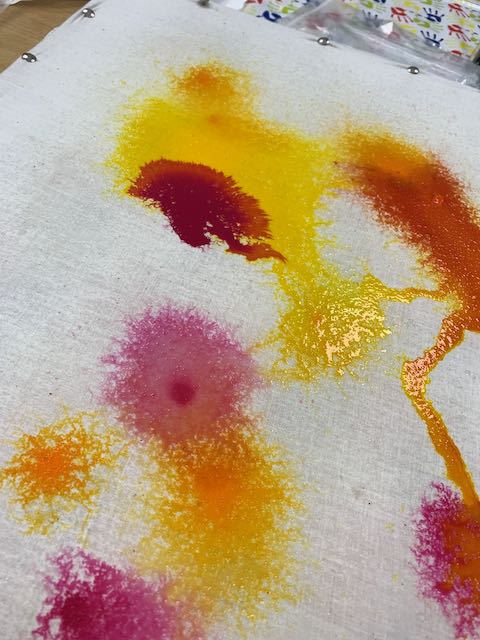
…… another colour, I needed to be careful that the purple wasn’t too close to the yellow, because I didn’t want mud!

Well, a little mud. It was very wet at this stage, so a little salt, and then a hair drier to move some of the water. I was really pleased with the results, but had to put it in the car to bring it home.
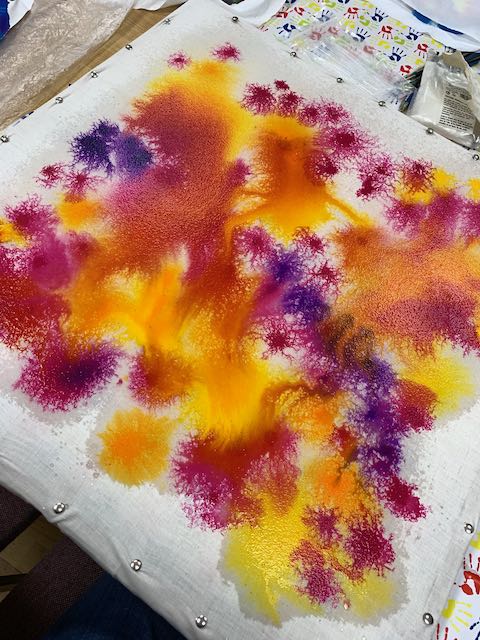
And by the morning, it had become this. I still like it, just not quite so much.
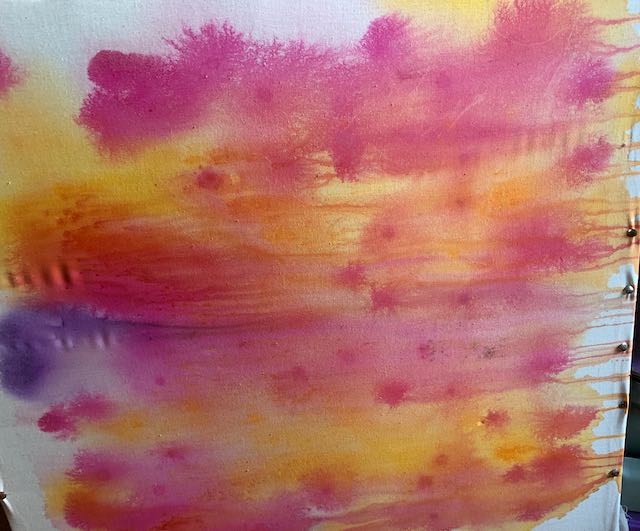
It’s a shame that very few of the tendrils remain. That’s the nature of the beast, you never know exactly how it will turn out, but it is also what makes it fun and exciting. It all needs ironing now.
